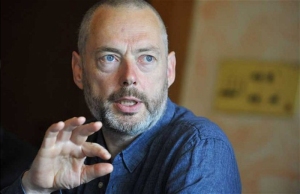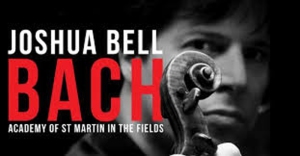 Christopher Hogwood, whose Academy of Ancient Music was a key ensemble in the period-instrument movement, striving to perform early music as the composer intended and as audiences were first presumed to have heard it, died on 24 September 2014 at his home in Cambridge, England. He was 73.
Christopher Hogwood, whose Academy of Ancient Music was a key ensemble in the period-instrument movement, striving to perform early music as the composer intended and as audiences were first presumed to have heard it, died on 24 September 2014 at his home in Cambridge, England. He was 73.
Mr. Hogwood, a conductor, harpsichordist and scholar for whom an “authentic sound” was paramount, co-founded the Early Music Consort, which focused on medieval and Renaissance music, in 1967, but the paucity of information regarding historically accurate performance styles troubled him. The Academy, which he established in 1973 as “as a sort of refugee operation for those players of period instruments who wanted to escape conductors,” initially focused on seventeenth and eighteenth-century music. While praised for their buoyancy and stylishness, his interpretations were also sometimes criticized as dry and unemotional.
One of the group’s significant early achievements was its 1980 recording of Handel’s Messiah, with the soprano Emma Kirkby. Peter G. Davis, writing in The New York Times, said it was “like no Messiah ever heard before in this century,” a performance that embodied the aesthetic championed by Mr. Hogwood: buoyant playing on gut strings with minimal vibrato.
Mr. Hogwood’s more than two hundred recordings include the complete Mozart symphonies and the complete Mozart piano concertos, with the pianist Robert Levin.
Mr. Hogwood, who early in his career played continuo in Neville Marriner’s Academy of St. Martin in the Fields, was once referred to as “the von Karajan of early music” – a reference to Herbert von Karajan, who in addition to being one of the twentieth century’s most important conductors was a famously imperious personality. In a phone interview, the violinist Pavlo Beznosiuk, a member of the Academy of Ancient Music since 1984, disagreed; in fact, he said, “Anyone less like von Karajan is hard to imagine.” Mr. Hogwood, he added, “was very collaborative and always happy to defer to the musicians if they had a better idea.”
During a concert in 2011 at Alice Tully Hall, where he directed Juilliard415, the school’s period-instrument ensemble, Mr. Hogwood announced to the audience, “Instead of standing here, anachronistically waving my arms, I’ll join you.” He then left the stage and took a seat in the hall to listen.
Early in his tenure as the artistic director of the Boston-based Handel and Haydn Society, which lasted from 1986 to 2001, Mr. Hogwood converted the ensemble to an exclusively period-instrument group. The Society’s major collaborations included a staging of Gluck’s Orfeo ed Euridice with the Mark Morris Dance Group as well as projects with the jazz pianists Dave Brubeck and Chick Corea. Mr. Hogwood had a particular affinity for Mendelssohn and was scheduled to conduct the composer’s Elijah in March 2015 with the Handel and Haydn Society.
In 2008 he became director emeritus of the Academy of Ancient Music, succeeded by the harpsichordist Richard Egarr.
In addition to period ensembles, Mr. Hogwood led orchestras, including the Los Angeles Philharmonic and the Chicago Symphony. He also conducted opera, including Purcell’s Dido and Aeneas at La Scala in 2006; among the operas he recorded were Handel’s Agrippina, Alceste, Orlando and Rinaldo. He also conducted the works of more modern composers like Stravinsky, Copland and Tippett.
Mr. Hogwood wrote several books, including a biography of Handel first published in 1984 and revised in 2007, and prepared many scholarly editions of scores, which he used for his own performances, often correcting previously published mistakes.
He held academic positions at the Royal Academy of Music, King’s College London, Cambridge University, Harvard University, Cornell and Gresham College, London.
Christopher Jarvis Haley Hogwood was born in Nottingham, England, on 10 September 1941, the son of Haley and Marion Hogwood. His father was a physicist, his mother a secretary for the International Labour Organization. He studied literature and music at Pembroke College, Cambridge; his harpsichord teachers included Gustav Leonhardt.
Some musicians and scholars now believe that modern instruments allow for greater interpretive possibilities than original instruments – that the wonders of Bach’s music, for example, can be best illustrated on a modern piano. But according to Mr. Hogwood, “the theory that Mozart’s music was simply awaiting the invention of the Steinway is wrong.”
In a recent interview with The Juilliard Journal, Mr. Hogwood said: “You can play things stylishly on the wrong instruments or unstylishly on the right instruments; I hope we’ll get it stylish on the right instruments. It’s just clearing the way so that people hear them as the composer intended, and if he wasn’t a complete idiot, the way he intended is presumably the correct way for them.”
Vivien Schweitzer – The New York Times
 Houghton Library at Harvard University has recently examined a Bach manuscript from their collection under a microscope capable of capturing images. Fascinating details of the seventh measure of Canon à 4. Voc: perpetuus (BWV 1073) emerge at high magnification, including bleeding ink at staff lines, individual ink particles and a densely woven network of paper fibers.
Houghton Library at Harvard University has recently examined a Bach manuscript from their collection under a microscope capable of capturing images. Fascinating details of the seventh measure of Canon à 4. Voc: perpetuus (BWV 1073) emerge at high magnification, including bleeding ink at staff lines, individual ink particles and a densely woven network of paper fibers.

 The
The  On 16 October 2014, the Kuijken Ensemble will perform at St. Anthony of Padua Church in Istanbul as part of the Turkish capital’s yearly Bach Days.
On 16 October 2014, the Kuijken Ensemble will perform at St. Anthony of Padua Church in Istanbul as part of the Turkish capital’s yearly Bach Days.
 Christopher Hogwood, whose Academy of Ancient Music was a key ensemble in the period-instrument movement, striving to perform early music as the composer intended and as audiences were first presumed to have heard it, died on 24 September 2014 at his home in Cambridge, England. He was 73.
Christopher Hogwood, whose Academy of Ancient Music was a key ensemble in the period-instrument movement, striving to perform early music as the composer intended and as audiences were first presumed to have heard it, died on 24 September 2014 at his home in Cambridge, England. He was 73.

 In his third season as music director, violinist Joshua Bell has begun to record the masterpieces of J. S. Bach with the Academy of St. Martin in the Fields. On the recording for Sony Classical, Bell and the orchestra perform Bach’s Concertos in A minor and E Major for violin (BWV 1041-42), an arrangement for violin and orchestra of the Chaconne from Partita in D minor (BWV 1004), the Gavotte en Rondeau from the Partita in E Major (BWV 1006), also in an orchestral version, and the Air from Orchestral Suite no. 3 in D Major (BWV 1068).
In his third season as music director, violinist Joshua Bell has begun to record the masterpieces of J. S. Bach with the Academy of St. Martin in the Fields. On the recording for Sony Classical, Bell and the orchestra perform Bach’s Concertos in A minor and E Major for violin (BWV 1041-42), an arrangement for violin and orchestra of the Chaconne from Partita in D minor (BWV 1004), the Gavotte en Rondeau from the Partita in E Major (BWV 1006), also in an orchestral version, and the Air from Orchestral Suite no. 3 in D Major (BWV 1068).